Related Research Articles
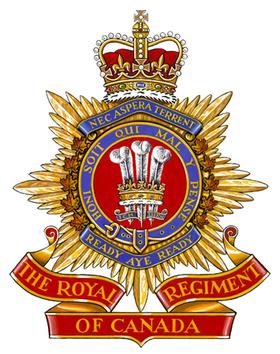
The Royal Regiment of Canada is a Primary Reserve infantry regiment of the Canadian Army. The regiment is based in Toronto, Ontario, and forms part of the 4th Canadian Division's 32 Canadian Brigade Group.

The 5th Canadian Division is a formation of the Canadian Army responsible for the command and mobilization of most army units in the provinces of New Brunswick, Nova Scotia, Prince Edward Island and Newfoundland and Labrador; as well as some units in Kingston, Ontario. The division is recognized by the distinctive maroon patch worn on the sleeve of its soldiers.
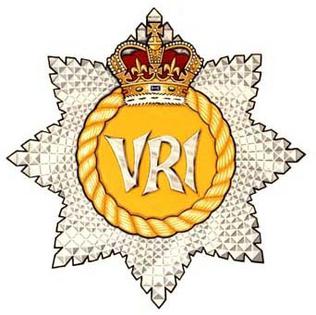
The Royal Canadian Regiment (RCR) is an infantry regiment of the Canadian Army. The regiment consists of four battalions, three in the Regular Force and one in the primary reserve. The RCR is ranked 1st in the order of precedence amongst Canadian Army infantry regiments, but in a quirk of the rules of seniority, its 4th battalion is 9th.

The Royal Newfoundland Regiment is a Primary Reserve infantry regiment of the Canadian Army. It is part of the 5th Canadian Division's 37 Canadian Brigade Group.

Beating Retreat is a military ceremony dating to 17th-century England and was first used to recall nearby patrolling units to their castle.
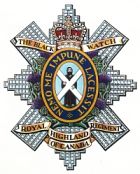
The Black Watch of Canada is a reserve infantry regiment in 34 Canadian Brigade Group, 2nd Canadian Division, of the Canadian Army. The regiment is located at 2067, rue Bleury in Montreal, Quebec, Canada, and is currently commanded by Lieutenant-Colonel J.B.F Roy, CD. The regiment's armoury was designated a National Historic Site of Canada in 2008. They are the senior Canadian-Scottish Regiment.
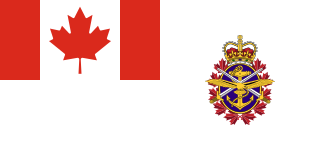
The following is a list of the notable authorized marches for various organisations of the Canadian Armed Forces. The first march listed is the march most commonly performed for that organisation on parade; it is commonly referred to simply as that organisation's "march" or "march past". In addition, many organisations also have additional pieces for slow marches, marches for mounted parades, pipe marches, etc.; they are subsequently listed and footnoted as applicable.
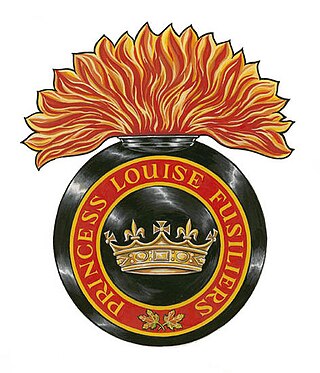
The Princess Louise Fusiliers is a Primary Reserve light infantry regiment of the Canadian Armed Forces.
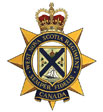
The West Nova Scotia Regiment is a line infantry regiment of the Canadian Army, part of the Primary Reserve, and is part of the 5th Canadian Division's 36 Canadian Brigade Group. The regiment recruits volunteers from the South-Western part of the province of Nova Scotia and has its headquarters at LFAATC Aldershot, near the community of Aldershot, Nova Scotia.

A military tattoo is a performance of music or display of armed forces in general. The term comes from the early 17th-century Dutch phrase doe den tap toe, a signal sounded by drummers or trumpeters to instruct innkeepers near military garrisons to stop serving beer and for soldiers to return to their barracks and is unrelated to the Tahitian origins of an ink tattoo.

Les Fusiliers de Sherbrooke is a Primary Reserve infantry regiment of the Canadian Army. It is based in Sherbrooke, Quebec, with a sub-unit in Granby.
32 Combat Engineer Regiment is the Primary Reserve unit of the Royal Canadian Engineers in Toronto, Ontario, Canada. It is assigned to 32 Canadian Brigade Group, part of 4th Canadian Division.
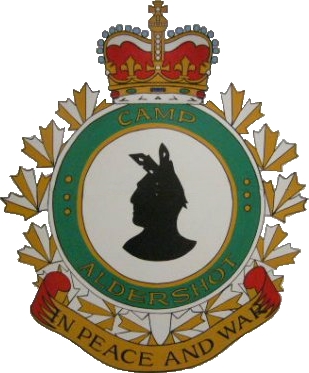
5th Canadian Division Support Group Detachment Aldershot is a training facility for 5th Canadian Division of the Canadian Army. It is located in Kings County, Nova Scotia.

The Regimental Pipes and Drums of The Calgary Highlanders is an authorized volunteer pipe band associated with The Calgary Highlanders of the Canadian Forces. For many years, the band was a bona fide, and separate, military unit unto itself, with a separate Unit Identification Code within the CF. Today, the band has been reduced to volunteer status but officially maintains an establishment of eight paid military musicians on its rolls. The band has had mixed success in competitions, but under the direction of Pipe Major Michael Giles had become successful in the Grade Three circuit in Alberta in the years leading up to the regimental centennial in 2010. The band published a recording to commemorate the 80th anniversary of the Regiment in 1990, titled Eighty Years of Glory and commemorated its centennial in 2010 by releasing a second CD entitled Onward.
The Regimental Band and Pipes was founded on The Citadel campus in Charleston, South Carolina in 1909 with late marine general, Harry K. Pickett, in command. The marching band makes up one of the twenty-one companies of the South Carolina Corps of Cadets. In 1991, the band participated in the Edinburgh Military Tattoo in Edinburgh, Scotland becoming the first military college selected for the honor. They returned in 2010 as the only unit from the United States to appear at the Silver Jubilee of the Tattoo and appeared again in 2015.

Atlantic Command was a formation of the Canadian Army created during the Second World War to strengthen and administer home defence facilities on Canada's Atlantic Coast. A second major function was to train reinforcements to be sent to the Canadian divisions in Europe. Most of those soldiers received and trained with their personal weapons in Camp Debert before being transported by train to Halifax where they embarked on troop ships that took them to Britain.

Canadian military bands are a group of personnel in the Canadian Armed Forces (CAF) that performs musical duties for military functions. Military bands form a part of the Music Branch of the CAF, composed of six full-time professional Regular Force bands, 15 Regular Force voluntary bands, and 53 part-time reserve force bands. Bands of the Music Branch are often badged with the unit or Canadian Forces base insignia that they support.

The Band of the Ceremonial Guard is an ad hoc military band that is attached to the Canadian Forces Ceremonial Guard in Ottawa. All members of the band are fully trained members of the Canadian Armed Forces (CAF) and consists of personnel principally from the two Foot Guards regiments and has even since 2007 been manned by a pan–Canadian Forces approach that is inclusive to musicians from the Royal Canadian Navy, Canadian Army and Royal Canadian Air Force. The band forms a separate company within the CG and rely on the Headquarters Company for administration and support personnel. In full composition, the band is active from April to August.

The Band of The Royal Regiment of Canada is a Canadian military band that serves as the official regimental band of the Royal Regiment of Canada. It is the oldest permanently organised band in the Canadian Forces. It is based at Fort York in Toronto and is assigned to the part of 4th Canadian Division's 32 Canadian Brigade Group. The ceremonial dress uniform of the band is a scarlet tunic and bearskin, similar to Grenadier Guards in the United Kingdom, with the only difference being the plume is red over white, as a homage to the former Canadian Guards regiment.
The Loyal Edmonton Regiment Band (L EDMN R Band), a Canadian Army volunteer brass and reed band that serves as the de facto official military band of the Central and Northern Alberta area and the regimental band of The Loyal Edmonton Regiment (4th Battalion, Princess Patricia's Canadian Light Infantry) in Edmonton, Alberta. Operationally, it's part of the 41 Canadian Brigade Group. The band's force strength is currently at 22 personnel.
References
- ↑ Rikhye, Ravi (2012). Concise World Armies 2009. Ravi Rikhye. ISBN 978-0-9820541-5-4.
- ↑ "The Royal Nova Scotia International Tattoo". Altissimo!. Retrieved 2020-03-03.
- ↑ "Tattoo | Legion Magazine". legionmagazine.com. September 2007. Retrieved 2020-03-03.
- ↑ "37 years at the Tattoo". Trident Newspaper. 2017-07-24. Retrieved 2020-03-03.
- ↑ "Patrick Forde – Saxophone" . Retrieved 2020-03-03.
- ↑ "The Spinney Brothers".
- ↑ Musical Performance in the Canadian Military: A Preliminary Analysis of an Institution
- ↑ https://www.pressreader.com/canada/journal-pioneer/20100726/281844344918245 . Retrieved 2020-03-03– via PressReader.
{{cite web}}: Missing or empty|title=(help)